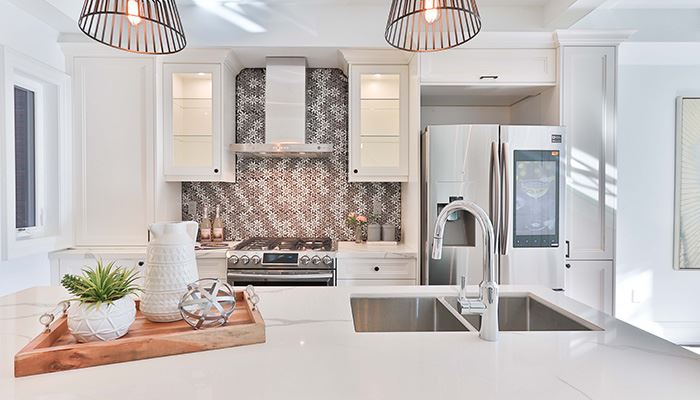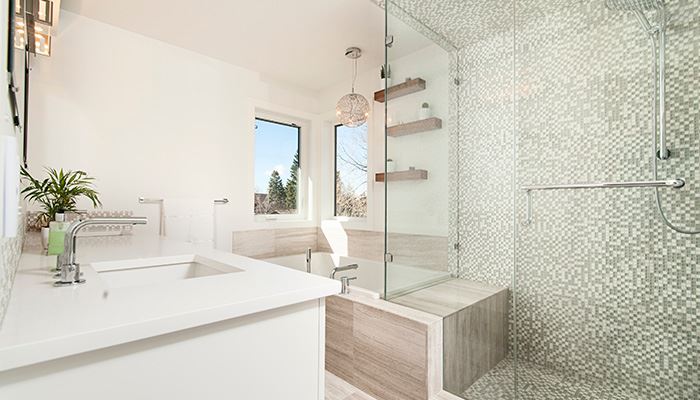Calculating Return on Investment for Home Renovations
A renovation might seem like a great idea to add value to your property, but it’s critical you do your calculations upfront so you understand the investment and time required.
The renovation boom hit a historic high at the end of 2018, with private investment in alterations reaching the highest it’s been since the early 2000s. Whether it’s the influence of home reno TV shows or tighter credit lending, more Aussies are taking on the challenge – but is it worth it?
The primary goal of a big renovation project is typically to make a profit. But home improvements can be costly and as a result, many homeowners prefer to put their home on the market to avoid the stress. You therefore need to work out how serious you are by assessing what level of work you can take on, as well as the potential return on investment you think you’ll get. You’ll need to do thorough research - too many homeowners rely on instinct.
Budgeting
Before you start tearing down the walls, you need to have a clear view of how much you can spend and what your priorities are.
Once you’ve factored in all the known costs, add a bit of wiggle room for unexpected costs. When renovating for profit, your numbers need to speak loudly. Document every detail and analyse it during and at completion of the project.
Whether it’s a new bathroom or kitchen, it’s likely you’ll need to bring in the professionals. Compare rates for the tradespeople in your area and request a simple contract that describes the work, cost and any warranty (most building industry peak bodies should provide this).
You might be able to save money by doing some work yourself. Talk to your builder about your plans, they’ll probably want you to steer clear of any structural and mechanical renovations as this could affect the builder’s warranty. But remember, if you don’t have the skills, leave it to the pros – a poor job could lower the value of your property!
No matter how big or small your renovation, you may need to borrow money, learn more about how to finance your renovation.
Living through disorder
In addition to creating a clear budget, you need to prepare a timeline.
Big renovations don’t happen overnight and can cause disruption for weeks. This might be okay if it’s just you in the house, but if you’ve got a family, not having access to the bathroom for a long period could be problematic. Plan and budget for days out of the house or ask friends and family to look after the children for a night or two.
Types of renovations
A common misconception is that the bigger the home improvement the more money you’ll get in the final sale, but that is not always the case. Here are some of the most profitable renovations to consider.
Exterior – first impressions do count. Tidy paths, spruce plants and give the outside of your house a fresh lick of paint.
Kitchen and bathroom – these are the two areas which could add huge value to your home, but watch-out, it’s easy to overspend here!
Natural light – big windows and skylights can transform a room and will instantly be noticed at house viewings. If new windows aren’t possible, strategically place mirrors around the property.
Home staging and styling – if you’re planning to sell the property quickly, make sure you’re budgeting for styling. This is your secret weapon for getting a good sale.
It’s important to note that most local governments have planning policies that allow minor internal and external changes without council approval, but if in doubt, check first.
Will the remodelling payoff?
The key to success is making the effort look more expensive than it actually is. This doesn’t mean opting for the cheapest materials and budget builders, just be conscious of each decision.
You need to consider whether the buyer will appreciate the cost and hassle. For example, you may have to put in a lot of time and expense into improving the insulation or wiring, but the buyer may not value the renovations that they cannot physically see.
The buyer may also have a completely different taste to you, so before you start forking out for ornate handles and hand-carved cabinets, bear in mind that more modest renovations tend to hold their value better. If a buyer doesn’t want to pay the extra cost for extravagant furnishings, they probably won’t.

Location, location, location
Even with the most well-calculated renovation, location is still the primary focus for most home buyers and they will be doing their own research on the average neighbourhood house prices. You can check the median sale price in your area by downloading a free suburb report. If your house is already worth more than the average house, then your return on investment for renovations may not be as high as you hoped, this is because, most people would prefer to live in a better area than pay extra for a newly fitted house.
If you’re in the market for a new property to renovate, think good infrastructure and amenities, close to transport and a quiet location.






